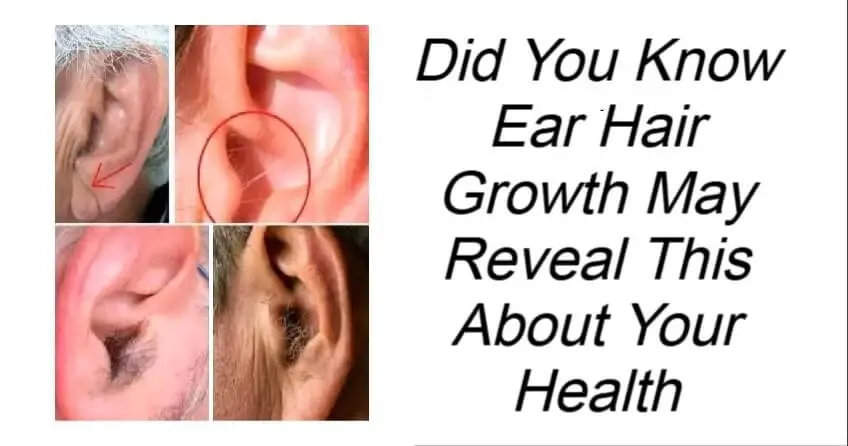Did You Know Ear Hair Growth May Reveal This About Your Health
It is natural to have hair on your ears. However, if you have a lot, you may wonder why. Really, it’s not that strange—almost your entire body is covered in some type of hair. The only parts that do not have it are your palms, lips, and soles of your feet.
Your ears have hair both on the outside and inside. Even in large quantities, it is usually harmless.
Why Do Ears Have Hair?
Before you were born, your entire body was covered in fine, soft hair called lanugo, including your ears. This usually falls off before birth, but in some cases, especially for premature babies, it can take a few weeks to disappear.
As people age, especially men, they may develop more hair in and around their ears. Doctors believe this could be due to an increase in testosterone, which causes hair to become coarser and thicker over time.
The hair inside your ear plays an essential role. Along with earwax, it helps trap dirt and debris, preventing them from reaching your eardrum. Additionally, tiny sensory hairs inside the inner ear help with hearing and balance. These hairs, located in fluid-filled canals, bend when you move, sending signals to your brain about your body’s position in space.
What Causes Excess External Ear Hair?
Doctors aren’t entirely sure why some people develop excessive outer ear hair. For a long time, researchers believed it was a genetic trait passed down through the Y chromosome. However, recent studies suggest this isn’t the case.
Excess ear hair is relatively rare but is more common among men from India and Sri Lanka. Another unusual occurrence is seen in some babies born to diabetic mothers. Studies suggest that better blood sugar control during pregnancy reduces the chances of this happening.
There’s also a medical condition called hypertrichosis, where excessive hair growth occurs all over the body. Some cases are genetic, but most are caused by other factors, including:
- Certain medications
- Metabolic or endocrine disorders
- Poor nutrition
- Abnormal growths in the ovaries or adrenal glands
- Infectious or inflammatory skin conditions
How Do You Get Rid of It?
Hairy ears don’t pose any serious health risks, but if you dislike how they look or feel, there are several ways to remove the hair:
- Shaving: A razor or electric trimmer can remove ear hair quickly. However, hair grows back within 1-3 days. Be cautious—razors can cause cuts, irritation, or ingrown hairs. For trimming inside the ear, use an electric razor designed for ear hair, not a straight razor.
- Plucking: Using tweezers, you can pull individual hairs from the root. This method can last 1-8 weeks, but it can be painful.
- Waxing: Applying hot or cold wax can remove hair for 2-8 weeks. Once the wax hardens, a paper strip is used to pull off the wax and hair together.
- Hair Removal Creams (Depilatories): These creams dissolve the hair, making removal easier. However, they should only be used on the outer ear, as they may cause irritation or allergic reactions. Always test a small area first before applying widely.
By understanding why ear hair grows and how to manage it, you can decide the best method for your needs.
You’ve just read, Ear Hair Growth May Reveal This About Your Health. Why not read Manager Had To Hire A New Employee.

